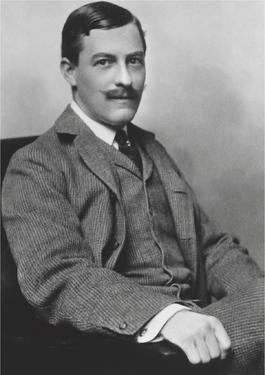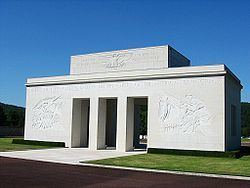Nationality American Role Designer Name William Delano | Practice Delano & Aldrich Occupation Architect | |
 | ||
Died January 12, 1960, New York City, New York, United States Structures Kykuit, Oheka Castle, Marine Air Terminal, William Jefferson Clinton F, Mirador Similar People Chester Holmes Aldrich, William W Bosworth, John D Rockefeller, William L Harkness, Bill Clinton | ||
William Adams Delano (January 21, 1874 – January 12, 1960), an American architect, was a partner with Chester Holmes Aldrich in the firm of Delano & Aldrich. The firm worked in the Beaux-Arts tradition for elite clients in New York City, Long Island and elsewhere, building townhouses, country houses, clubs, banks and buildings for colleges and private schools. Moving on from the classical and baroque Beaux-Arts repertory, they often designed in the neo-Georgian and neo-Federal styles, and many of their buildings were clad in brick with limestone or white marble trim, a combination which came to be their trademark.
Contents

Early life and education
William Delano was born in New York City, a member of the prominent Delano family of Massachusetts. He was the cousin of President Franklin Delano Roosevelt. He was the nephew of John Crosby Brown, who headed the Brown Brothers & Company banking/trading group, and his father Eugene Delano (1843 – 1920), an 1866 graduate of Williams College, was a partner in the firm. His mother, Sarah Magoun Adams, was the daughter of William Adams, a noted clergyman and academic and a founder as well as a president of Union Theological Seminary, and Martha Bradshaw Magoun, the daughter of Thatcher Magoun (associated with the Thatcher Magoun clipper and 60 State Street) and Mary Bradshaw.
William Delano was educated at the Lawrenceville School and Yale University, where he served on the editorial board of campus humor magazine The Yale Record and was a member of Scroll and Key, and Columbia University's school of architecture. He also studied at the École des Beaux-Arts in Paris, receiving a diploma in 1903.
Career
He met his longstanding partner Chester Holmes Aldrich when they worked together at the office of Carrère and Hastings in the years before the turn of the 20th century. They formed their partnership after Delano's return from Europe in 1903 and almost immediately won commissions from the Rockefeller family, among others. Delano & Aldrich tended to adapt conservative Georgian and Federal architectural styles for their townhouses, churches, schools, and a spate of social clubs for the Astors, Vanderbilts, and the Whitneys. Separately (Delano was the more prolific) and in tandem they designed a number of buildings at Yale. Delano taught at Columbia University from 1903 to 1910.
Delano alone won the commission for the second-largest residence in the United States, Oheka, overlooking Cold Spring Harbor on Long Island, New York for financier Otto Kahn. Built from 1914 to 1919 in French chateau style, with gardens by Olmsted Brothers, Oheka ranges over 109,000 square feet (10,000 m²) and was staffed with 125 people.
In 1922, Delano designed the interiors of the Grand Central Art Galleries, an artists' cooperative established that year by John Singer Sargent, Edmund Greacen, Walter Leighton Clark, and others. Eight years later Delano and Chester Holmes Aldrich were asked by the organization to design the U.S. Pavilion at the Venice Biennale. The purchase of the land, design, and construction was paid for by the Galleries and personally supervised by Clark. As he wrote in the 1934 catalog:
"Pursuing our purpose of putting American art prominently before the world, the directors a few years ago appropriated the sum of $25,000 for the erection of an exhibition building in Venice on the grounds of the International Biennial. Messrs. Delano and Aldrich generously donated the plans for this building which is constructed of Istrian marble and pink brick and more than holds its own with the twenty-five other buildings in the Park owned by the various European governments."
The pavilion, owned and operated by the Galleries, opened on May 4, 1930. It was sold to the Museum of Modern Art in 1954 and later to the Guggenheim Museum.
Delano's irreverent sense of humor was subtly expressed in some his architectural details and friezes, such as the low-relief frieze of tortoises and hares in the apartment block at 1040 Park Avenue, and backgammon club rooms ornamented like backgammon boards. At the Marine Air Terminal at LaGuardia Airport, built for Pan American Airways' transatlantic seaplane service in 1939 and the oldest such passenger air facility still in use, his Art Deco terra cotta friezes feature flying fish. "There is as much that is new to be said in architecture today by a man of imagination who employs traditional motifs as there is in literature by an author, who, to express his thought, still employs the English language," Delano wrote in 1928.
In 1948, Delano was commissioned to design the Epinal American Cemetery and Memorial (1948 – 1956), one of fourteen World War II monuments constructed abroad by the American Battle Monuments Commission. Delano also designed terminals at La Guardia and Miami airports. In Washington, D.C., he designed the Post Office building in the Federal Triangle complex. He was the architect for the 1927 renovation to the White House, one of the key contributors to its near-collapse in 1948-9, and consulted on the controversial Truman Balcony. In addition to his design work, Delano served on the board of design for the 1939 New York World's Fair, and, in Washington, on the National Capital Planning Commission and the U.S. Commission of Fine Arts from 1924 to 1928, including as vice chairman in 1928. Delano's many awards and honors include election to the American Academy of Arts and Letters, and the National Institute of Arts and Letters in 1940. He was also named an officer by the French Legion of Honor and was an academician of the National Academy of Design. In 1953, the American Institute of Architects awarded William Adams Delano its Gold Medal.
Delano continued to practice almost until his death in 1960, aged 85, in New York City. Aldrich had left the partnership in 1935 to become the resident director of the American Academy at Rome, where he died in 1940.
Marriage and descendants
Delano married Louisa Millicent Potter (Sheffield) on May 23, 1907.. His son, William Richard Potter Delano, was born on July 31st, 1909. His son married Dorothea Frances Lehmann in October of 1939.
Archives
The Delano and Aldrich archive is held by the Drawings and Archives Department in the Avery Architectural and Fine Arts Library at Columbia University. Some historical records of Delano & Aldrich's work on the Wall Street headquarters of Brown Brothers Harriman are included in the Brown Brothers Harriman Collection housed in the manuscript collections at New-York Historical Society.
Works
Surviving buildings (all in New York City unless noted):
